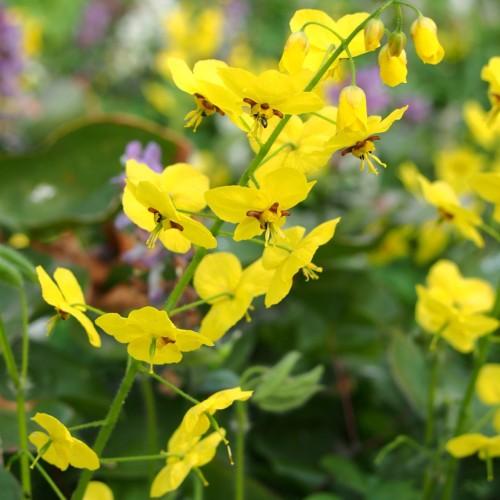
bishop's hat
Epimedium pinnatum subsp. colchicum
Cycle:
Herbaceous Perennial
Watering:
Minimum
Hardiness Zone:
5 - 8
Flowers:
Flowers
Sun:
Part shade,full shade
Leaf:
Yes
Growth Rate:
Low
Maintenance:
Low
Drought Tolerant:
Yes
Salt Tolerant:
Yes
Care Level:
Medium
watering
Bishop’s Hat (Epimedium pinnatum subsp. colchicum) is an interesting perennial known for its lacy white and pink flowers. It prefers moist, shaded conditions but will also tolerate dry shade. It requires well-drained soil. To keep this plant healthy, it should be watered once a week in the spring and summer, when temperatures are warmer and rainfall is lower. In the fall and winter months, reduce watering to once every 2 weeks or less. Make sure the soil does not remain wet for too long, as this can cause the roots to rot. During hot, dry spells, you may need to give your Bishop’s Hat an extra drink. Bishop’s Hat is sensitive to overwatering, so check the soil before watering. If it feels dry an inch below the surface, it’s time for a drink. It’s also important to not water until the soil dries out again so the roots don’t become waterlogged.
sunlight
Bishop's Hat (Epimedium pinnatum subsp. colchicum) prefers partial shade, but it will also tolerate more direct sunlight for several hours a day. It’s best to give Bishop's Hat morning sun and afternoon shade, or indirect sun all day. Too much direct sun exposure can scorch or kill this plant. To get the best growth, the Bishop's Hat should receive at least 4 hours of direct sun and 4 hours of indirect sun every day.
pruning
It is best to prune Bishop’s Hat in late winter or early spring before new growth begins. Begin by cutting back all dead, decayed, and damaged foliage, followed by all wandering and overcrowded stems. Cut back the stems to the point of new bud emergence, and weeds should be removed from the bed prior to pruning. Prune each stem back by no more than 1-third of its current length as excessive pruning can affect the plant’s overall health. Regular maintenance pruning should be completed in late winter or early spring each year to maintain the plant’s health and vigor.
